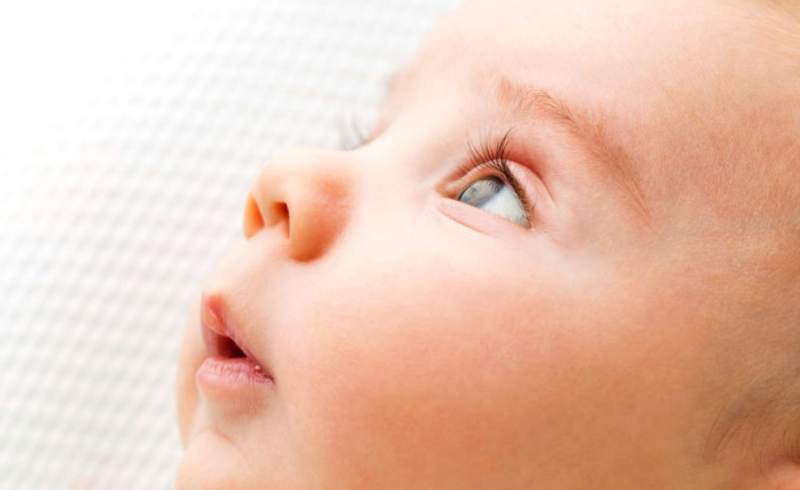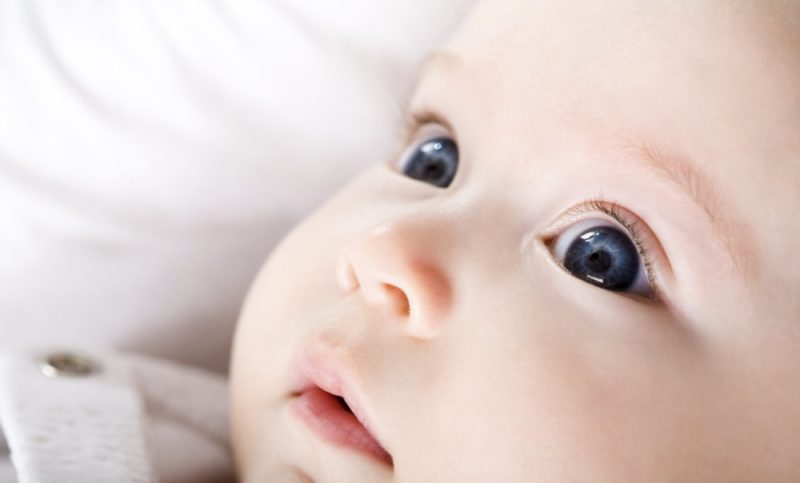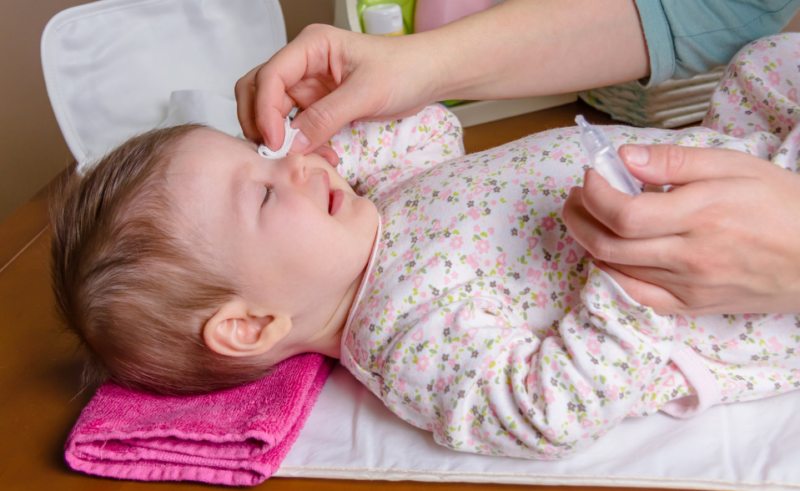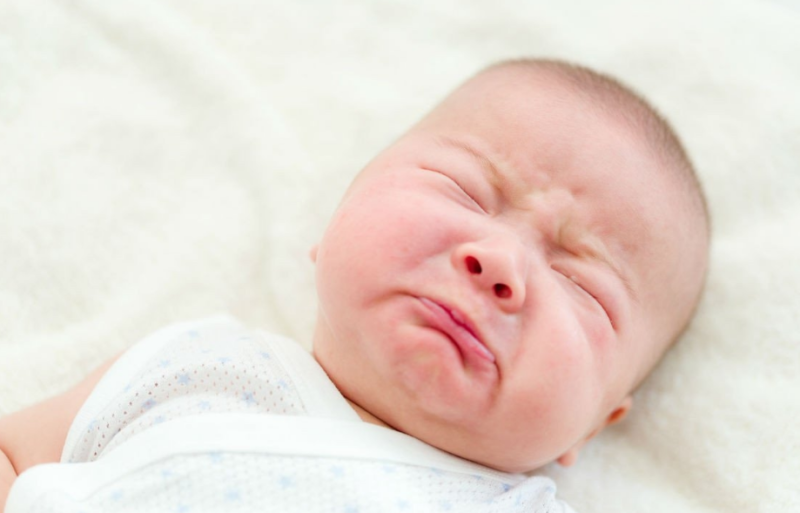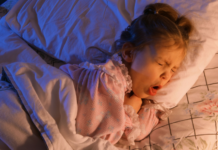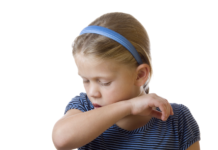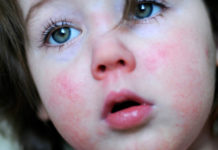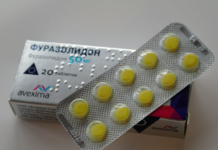With a blockage of the nasolacrimal canal, which is accompanied by the development of inflammation in the lacrimal sac, they talk about dacryocystitis in newborns. Pathology is congenital in nature and is quite common. The defeat can be either unilateral or bilateral.
Material Content:
Causes of dacryocystitis in newborns
The first factor that provokes the development of this pathology in children is the peculiarity of the structure of the channels that divert a tear. Normally, the continuous production of tears is carried out by the lacrimal glands. Biological fluid, constantly washing the conjunctiva, enters the lacrimal sac, and its excess goes into the nasal cavity. If there is obstruction of the channels along which the path of excretion of the tear runs, it stagnates, followed by inflammation in the lacrimal sac.
Predispose to the development of pathology:
- cork that did not resolve at the time of the birth of the baby;
- pathology of the development of the canal itself or individual parts of the skull;
- trauma that occurred during childbirth;
- dropsy.
The formation of the inflammatory process of the lacrimal sac is provoked by a bacterial infection that is caused by staphylococcus, streptococcus, Pseudomonas aeruginosa. Congenital dacryocystitis in a baby may not form if there is an independent rupture of the embryonic film or ejection of the cork.
But if in the first weeks of a newborn’s life the lacrimal canal capacity is not restored, bacterial contamination occurs with the development of pathological symptoms.
Symptoms and signs of the disease
Painful manifestations of dacryocystitis can occur in the first days or weeks of a baby's life. If there is prematurity of the baby, possibly a later development of the pathology, that is, 2-3 months after birth.
Symptoms of dacryocystitis can occur as follows:
- the appearance of swelling in the lacrimal organ;
- negative reaction of the baby with pressure on its inner corner of the eye;
- redness of the conjunctiva of the organ of vision;
- the allocation of mucous or purulent secretions from the lacrimal openings;
- sometimes a continuous flow of tears from the eye in the form of large or small drops.
More often during the pathological process, one eye is affected, but bilateral damage can also be noted. Inflammation of the anatomical formation is very similar in appearance to conjunctivitis. But the main diagnostic sign of dacryocystitis is the presence of purulent discharge when pressure is applied to the lacrimal sac.
In some cases, a successful outcome is possible when the baby during the first month of life has a spontaneous discharge of the cork with the restoration of the outflow of tear secretion. Clinical symptoms regress and dacryocystitis disappears.
Important! Any redness of one or both eyes in a newborn child with the presence or absence of swelling in the area of its internal angle requires the obligatory consultation of a pediatrician to exclude dacryocystitis.
How is the diagnosis
Diagnostic measures begin with a history of the child’s illness from the mother’s words. Next, a child is examined with an assessment of his general condition and objective ophthalmological data.
To clarify the patency of the lacrimal canal, the following studies are prescribed:
- tubular test - after cleansing the nose and removing the contents of the lacrimal sac, collargol is instilled into the conjunctival cavity with a subsequent temporary assessment of the disappearance of the drug from the conjunctiva;
- colored lacrimal nasal test - with the help of cotton turunda introduced into the nasal passage of a child, the time of its staining is determined.
The result of such tests is to obtain information about the partial patency of the lacrimal canal in the baby or its complete obstruction.
Clarification of the diagnosis is supplemented by the appointment of instrumental and laboratory examination methods, such as:
- blood and urine for a general analysis;
- bacteriological culture of the contents of the lacrimal sac to determine the infectious pathogen;
- scraping from the conjunctiva of the eyelids for PCR analysis;
- dacryocystography;
- according to MRI.
A comprehensive examination of the child necessarily includes a consultation examination of the children's ENT doctor, allergist, ophthalmologist.
Treatment of the inflammatory process
Treatment of dacryocystitis in newborns involves restoring the patency of the canal and eliminating the inflammatory phenomena of the lacrimal sac. The therapeutic measures of this pathology begin with a massage, which is taught to the mother of the baby. The strict implementation of all the recommendations of the doctor gives in most cases a positive result.
Massage with dacryocystitis of newborns must be carried out up to 6 times a day. Strict observance of regularity and the full volume of procedures allows achieving absolute cure in a third of 2-3 month old babies.
In addition, conservative treatment includes the use of the following medications:
- eye drops giving an antibacterial and anti-inflammatory effect - Levomycetin, Gentamicin, Vigamox;
- Furacilin - for washing the eyes;
- according to indications, antibiotics.
The treatment is supplemented by the appointment of physiotherapeutic procedures. It has a positive effect on the relief of the inflammatory process of UHF, which is combined with a massage course.
But if the performed lacrimal canal massage and drug therapy for 7-10 days do not bring results, lacrimal canals are probed.With the help of this procedure, the cork is mechanically removed, which prevents the free outflow of tear fluid. After this manipulation, the nasolacrimal canal is washed with antiseptics.
Medical sounding can be carried out repeatedly with subsequent washing. The full course of treatment until the final recovery can last up to 3 months. With a negative result of therapeutic measures for the treatment of dacryocystitis in newborns, surgical intervention is indicated, which is performed at a later age.
How to massage
Before the massage, it is necessary to fulfill a number of mandatory conditions for the mother, which require thorough washing of the hands with soap and trimming the nails to the maximum. You can use sterile gloves. Hands should be warm so that there is no discomfort in the baby.
Preparing a child for the procedure takes place in several stages:
- baby swaddle required;
- laying the baby on his back, on a hard surface;
- removal with a cotton pad moistened in a solution of furacilin, purulent discharge from the eyes, using a new disk for each organ of vision.
After preparation, they begin to perform massage, adhering to a certain technique:
- The finger is installed near the inner corner of the child’s eye, followed by light pressure on it.
- These movements continue along the bridge of the nose, but with great effort.
- Massage movements are performed in the technique of stroking, vibration, pressure.
- The effect on the lacrimal sac and nasolacrimal passages is repeated until the cessation of pus is stopped.
- The resulting secret is removed with a cotton pad moistened with furatsillin.
- After the massage, each eye of the child is treated with eye drops.
A massage course for an infant with dacryocystitis in most cases ends with an independent cork discharge or a rupture of a plate of embryonic origin in the nasolacrimal canal. The free passage of tears along the channel leads to inhibition and complete relief of the inflammatory process.
Possible complications
Launched cases of dacryocystitis in infants can be complicated by an abscess or phlegmon of the lacrimal sac, which provokes a sharp deterioration in the condition of the child. Intoxication phenomena spontaneously develop, and a rapid rise in temperature to high numbers occurs.
In this case, emergency assistance is required to relieve the negative manifestations of pathology, since the danger of the spread of the process to the meninges with the occurrence of meningitis, thrombosis of the cavernous sinus is not ruled out.
Prevention
Prevention of dacryocystitis in newborns requires timely access to a specialist with the initial signs of the disease and high-quality, in full, treatment.
Proper care for the eyes of the newborn, the systematic washing of them with antiseptic agents, as well as massage of the lacrimal sac and nasolacrimal canal will help to maintain healthy eyes of the child.


